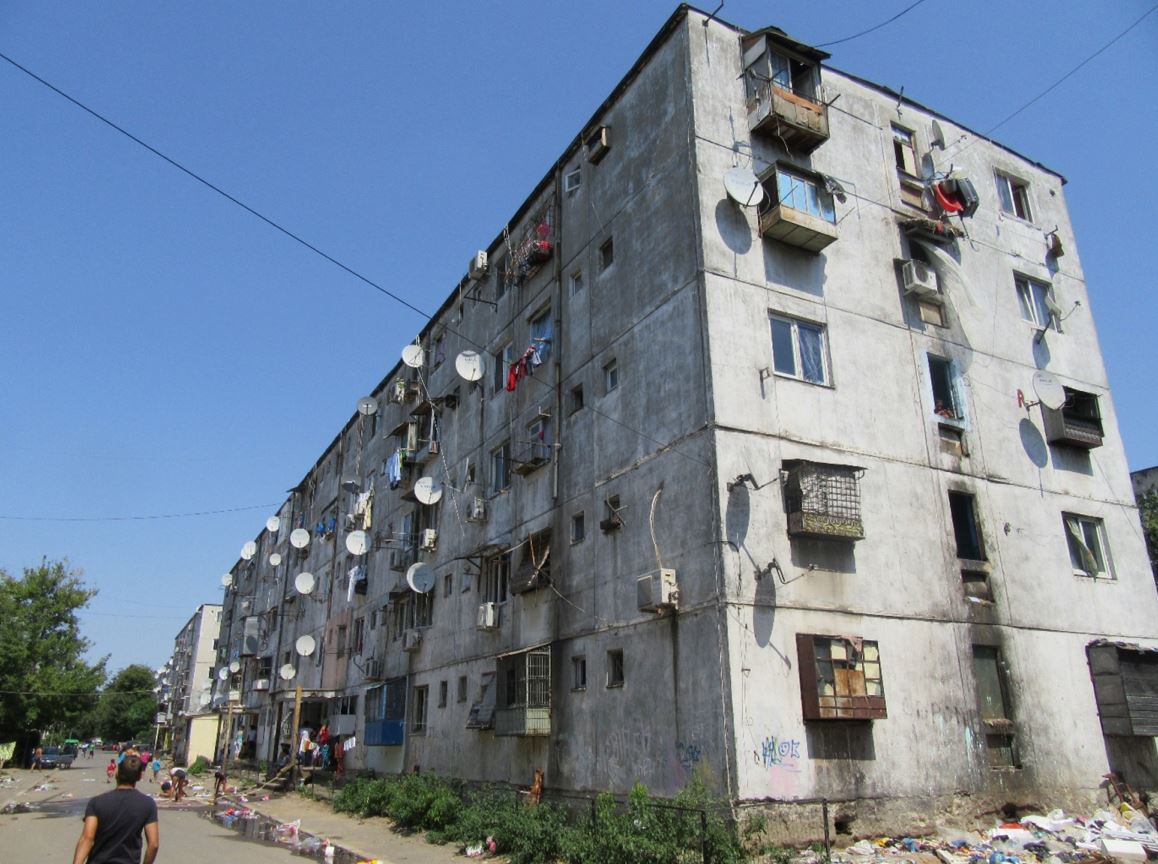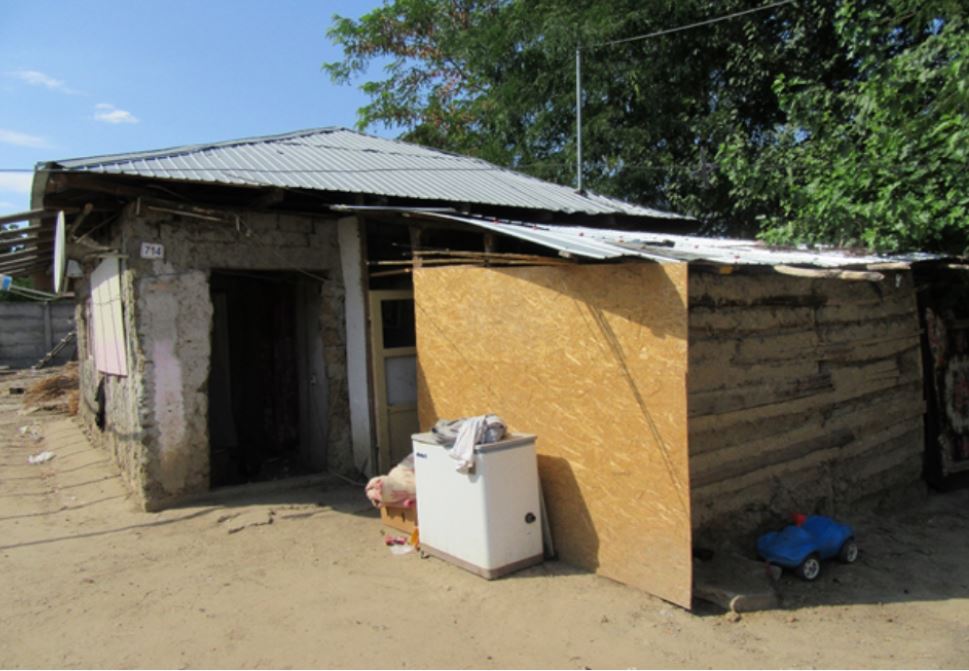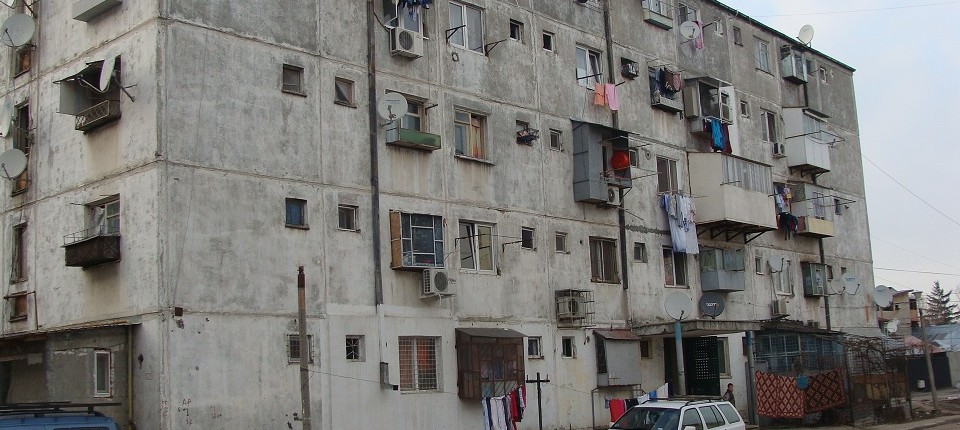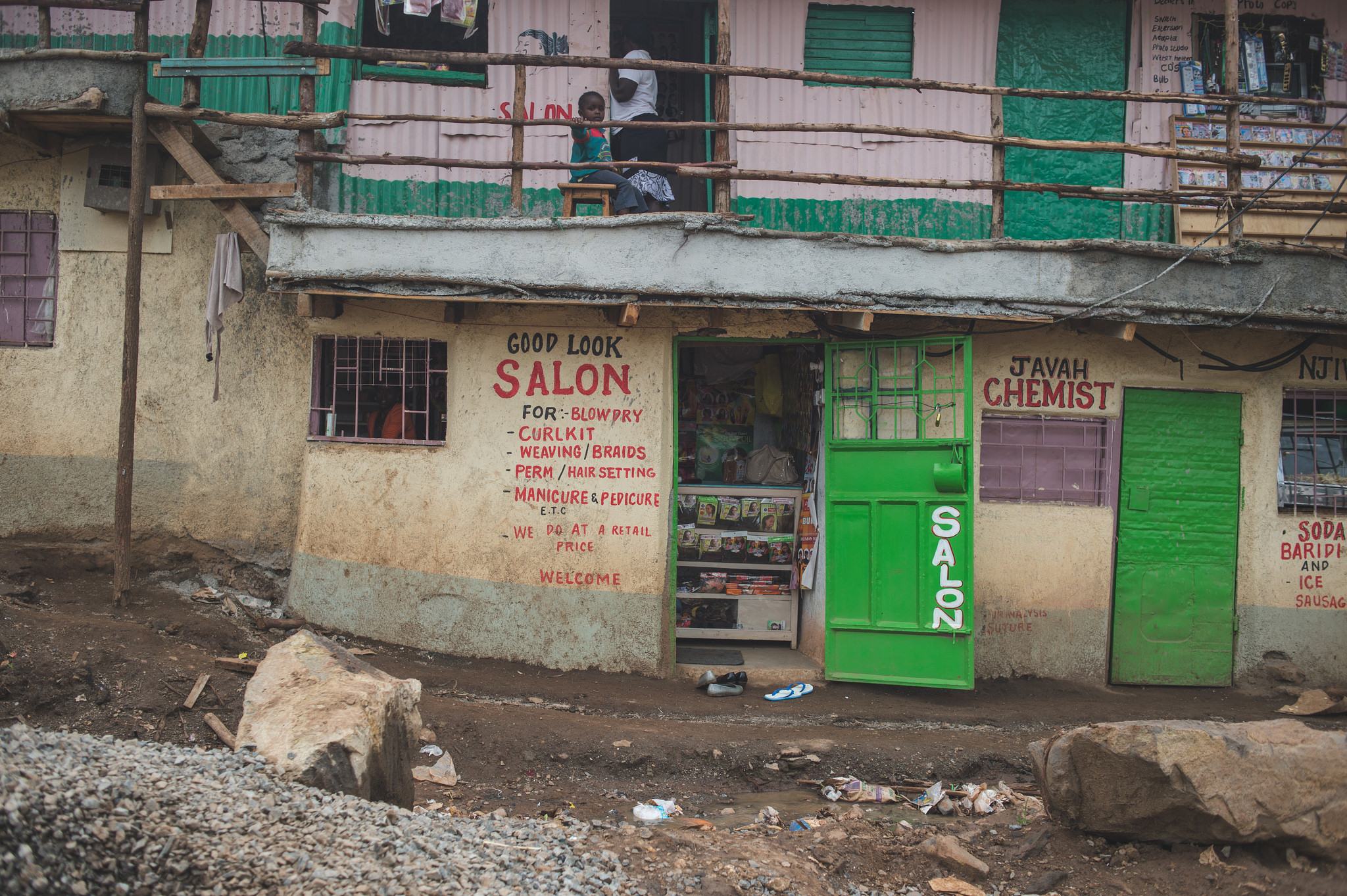In an earlier contribution I described the housing situation of Ferentari, a neighbourhood in southern Bucharest. The hardships described in that essay are based on research carried out in early 2012. However, one could argue that Romania was still recovering by that time from the rapid economic decline in the 1990s and the subsequent financial crisis in 2008. But the question remains what happened after 2012. Romania’s economy recovered, more European cohesion funds were available and yet I can reveal that at present poverty is still rampant in Ferentari (see figure 1). I did research in Sector 5, a city district in which Ferentari is situated and where also the highest number of poor households and Roma are housed. I interviewed several officials and analysed the most recent urban renewal master plan. While the sector’s hardships and the dire housing conditions are evident, most interviewees showed little compassion nor were they so frank to admit the long-lasting mismanagement. Instead, they rather blamed the local “Gypsies” for causing their own poverty. In this essay I will clarify the recent role of the local governing institutions in Bucharest in the reproduction of urban decay and severe socio-economic issues and the potential role of racialised perceptions of its poor residents. [1]

Figure 1: Present situation in the southern, and most impoverished part Ferentari. (Picture by author)
[1] The detailed analysis is soon published by City.
From no plan to a pointless master plan
The outcomes of recent policymaking in Sector 5 point to strong indifference to the challenges faced by poor quarters. Although the Sector had financial control over local taxes and budgets and increased funding possibilities, they largely chose not to change their insignificant roles in welfare and housing provision. There was awareness of European funds, but the officials had, according to external informants, such as a French advisor for Ferentari’s new master plan, no interest in applying for such funds and no idea of how to do so. European and national money had previously been applied for and used to improve schools and the local road and sewer networks, but these applications had been controlled and steered by national ministries and Bucharest’s central municipality. The much-needed renovation of existing housing and the construction of new affordable housing were not considered serious topics and were argued to be “private domains” (see image 2).

Figure 2: In the context of housing as a “private domain” this is the reality for many impoverished Romanians. (Picture by author)
Ideas about housing were shared with me by several local officials, but these ideas were vague, as were the analysed public documents on local urban regeneration. To substantiate this point, since my first talks with officials, in March 2014, I was informed of an upcoming master plan (Sector 5, 2017) intended to provide plans to combat Bucharest’s worst socioeconomic conditions and uplift roughly 40,000 residents from poverty. This master plan was ultimately adopted in 2018, but it is unclear as to how Sector 5 will renovate all the decayed blocks of apartments and regenerate the poorest parts of Ferentari. In the master plan, monies are allocated to fund housing efforts, but the amounts seem improbably small for both renovations and new social housing construction. Nor does the master plan mention anything about the use of EU funds. These EU funds have already proven to be important contributors to increased public spending. The EU is aware of socio-economic difficulties in various regions and intends to facilitate more equal developments through e.g. its Cohesion Policy Programme. The aim of the Cohesion Policy is to fund locally expressed needs. Direct contact between European institutions and the regions is claimed to provide clearer accountability and thereby ensure greater chances of success. However, the case of Ferentari and Sector 5 shows that local politics are unruly. While European (or national funds) are not applied for, the master plan fails already while it is in effect. To substantiate the unrealistic character of this plan; many of the deadlines for renovation and construction projects have long passed without any concrete outcome. I checked the intended building sites in December 2019 and could not even spot a shovel or a cement bag.
Why make plans when one can blame the “Gypsies”
As well as such apathy and half-measures, I also discovered the potential role of racism. Based on my own research results, I argue that racism and particularly the racialisation of Roma as workshy and even deceitful prevents the increased involvement of local officials in addressing segregation and housing poverty. I noticed that the marginal space of poverty and social exclusion has become synonymous with the homeland of the “Gypsies”. The people regarded as such are not necessarily Romanian Roma but rather are those racialised as undeserving, unreliable, and unmannerly subjects to which “Gypsy” is attributed as a status by the political classes. This racialisation process should certainly not be ignored when decentralisation is perceived as determining the highest possible level of democratic control over decision- and policymaking. Indeed, due to the Sector’s control over what funding proposals are ultimately submitted, it is not unthinkable that repudiated “Gypsies” are deliberately excluded. This was never explicitly admitted by the officials I interviewed, but indirectly the narrative was that whatever effort or amount of money one put into “their areas”, it was always “a waste of public money” (bani publici irosiți). To further illustrate the disdainful discourse, which is full of distrust, hatred, and contempt, I quote one of the interviewed policymakers:
Let’s be honest here, didn’t we give them [i.e., the poor racialised “Gypsy” Bucharesters from Sector 5] these “vagabond” apartments on Livezilor, Zăbrăuților, and Carpați? We connected them to water, we cleaned the buildings, we did I don’t know what else … A kindergarten was built. But these people need to be adopted, and this is what the EU doesn’t understand. The EU is reacting like a freaked-out woman, and instead of adopting these people, to change them, to give them livelihoods [in richer parts of the Union], they provide these inclusion funds. Their reaction is like a guy who gives money to his hysterical wife, just so he can be left alone.
It may thus be clear that the case of Sector 5 is a problematic pairing of inability, unwillingness, and racism in Bucharest’s local governance to deal with the large-scale hardship – probably one of the toughest in the European Union. The racialised notions of the interviewed officials regarding the poor people in their neighbourhood should thus not be downplayed in their importance when needs of impoverished and dehumanised inhabitants are systematically ignored. As such, critical voices are needed to continuously monitor such problematic pairings; the more so because in the decentralised EU’s cohesion approach needs must be expressed locally.




